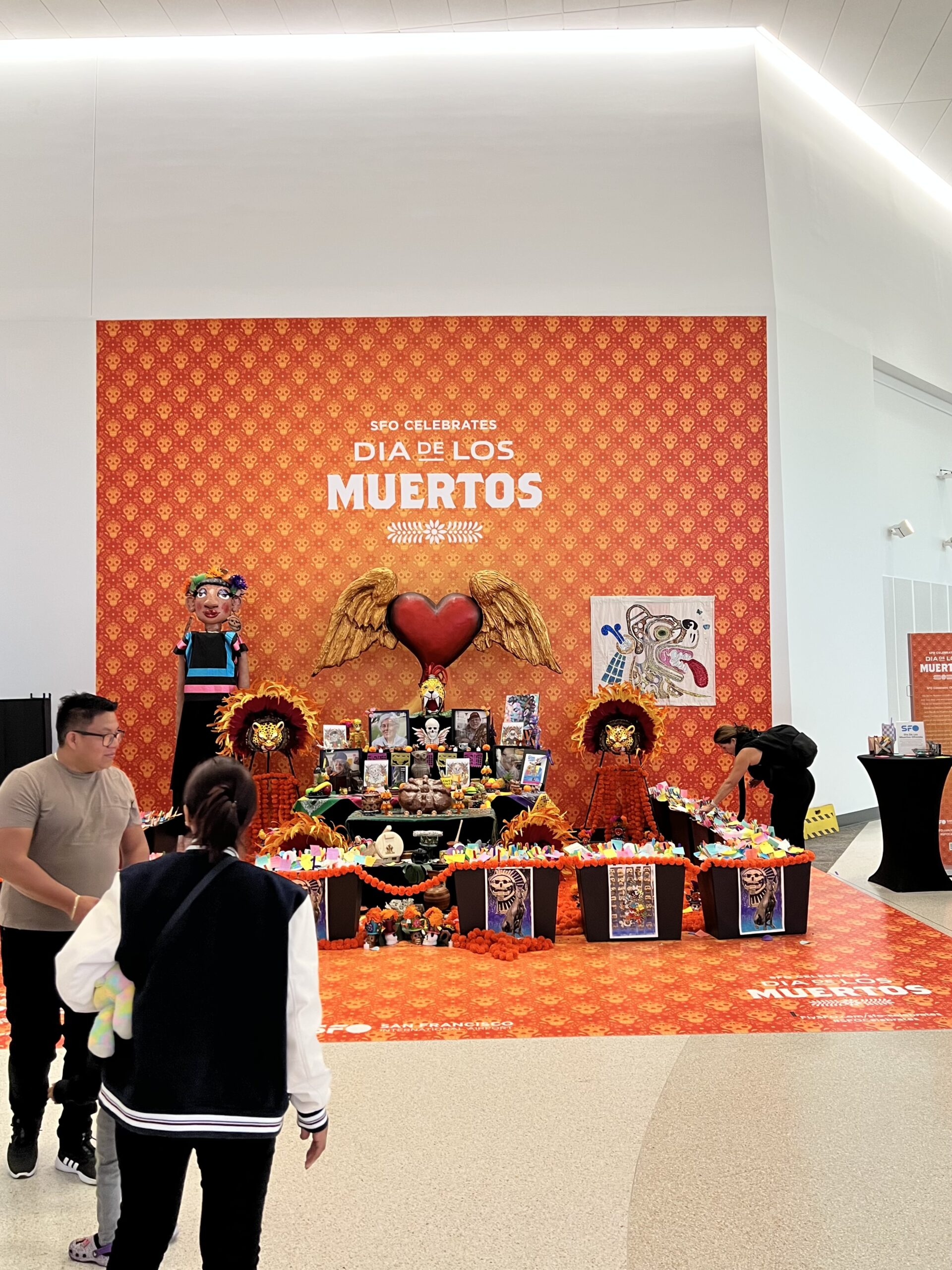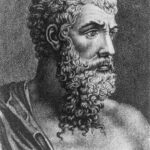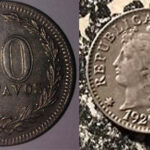Towards sunset on the Day of the Dead in November 1939, two men in white flannels sat on the main terrace of the Casino drinking anís.
Though el Día de los Difuntos technically means All Souls Day, November 2nd, the festival usually expands to include the preceding All Saints Day, el Día de Todos los Santos, when graveside vigils begin. The coincidence of an Aztec festival of offerings to the spirits of the dead with the Catholic All Souls Day, on which the living may pray for the souls of those in purgatory, gave rise to a colorful festival in the Day of the Dead, when the souls of the deceased may communicate with the living, celebrated by candlelit processions and all-night vigils at cemeteries, offerings of food and flowers for the departed ones, and parades and dances with death-masks, skeletons and skulls.
On the Day of the Dead which opens Under the Volcano in 1939 Laruelle and Vigil remember their friend (for lack of a better word) the Consul, but it is also the day in 1938 the Consul’s estranged wife, the former actress Yvonne, came back for one day. The combination of sunset, the Day of the Dead and 1939 creates from the outset of the novel the atmosphere of a world about to plunge into darkness.
There is a slight problem in Lowry’s dating, as November 2nd, 1938 was a Wednesday, while the action of the novels takes place on a Sunday; the novel was originally set on 1 November 1936, which was a Sunday, and in revising Lowry overlooked the discrepancy.
They had been playing tennis, followed by billiards, and their rackets, rainproofed, screwed in their presses — the doctor’s triangular, the other’s quadrangular —
Here Lowry inserts the number 7, a subtle reflection of the mystical union of the triad with the tetrad. Margerie Bonner Lowry reports that while at work on Under the Volcano, Lowry began to explore the theosophists’ canon ranging from P.D. Ouspensky to Swedenborg to Blake, James, Böhme and Yeats and further down into the arcana of A.E. Waite, Eliphas Levi, Madame Blavatksy, and, through coincidence, Frater Achad, AKA white magician Charles Stansfeld Jones, whose occult signature was the number 777. Lowry read in Frater Achad’s The Anatomy of the Body of God (1925) that the conjunction of the triad and tetrad represents “a perfectly proportioned Figure of the Tree of Life.” In the margins of his manuscript, Lowry scrawled a note warning that this detail “seems outside the cognisance of the ‘camera eye.’” It was present, however, long before sustained Cabbalistic matters entered the text. Described by Lowry (on page 77 no less) as “the fateful, the magic, the lucky good-bad number,” Lowry calls on “the passion for order even in the smallest things that exist in the universe: 7 too is the number on the horse that will kill Yvonne and 7 the hour when the Consul will die.” Chapter 7 of Éliphas Lévi’s Transcendental Magic devotes itself to the number:
The septenary is the sacred number in all theogonies and in all symbols, because it is composed of the triad and the tetrad. The number seven represents magical power in all its fulness; it is the mind reinforced by all elementary potencies; it is the soul served by Nature.
Lévi cites the seven deadly sins, the seven virtues, the seven planets, the seven seals of the Apocalypse, the seven genii of ancient mythologies, the seventh day of rest, the seven sacraments, the seven musical notes, the seven magical animals and the seven great archangels, concluding
The virtue of the septenary is absolute in Magic, for this number is decisive in all things….
unity of the monad / antagonism of the duad / perfection of the triad / completion of the tetrad / power of the pentagram / equilibrium of the hexad / absolute virtue of the septuary.
Lowry’s novel, which begins and ends at seven, accepts this judgment, and seven appears throughout: the tennis rackets, the Pleiades, the white horse at box seven, the Consul’s reflections, Eriksen 43 and 34. In this chapter (as a similar list in Lowry’s literary mentor Conraid Aiken’s Blue Voyage puts it), the Consul, his equilibrium upset, finds everything “at sixes and sevens”.
While Lowry had completed his 1940 draft of Under the Volcano before he met Frater Achad, he later wrote that he met a Cabbalist at a “critical and coincidental moment in the writing of the book.”
When Frater Achad did appear at Lowry’s Dollarton shack, the two began a long friendship with Lowry, during which time Lowry experimented with astral projection, the I Ching and yoga, and studied the Tree of Life, hanging a reproduction on a wall in the shack. After months of immersion, Lowry ended his experiments, according to The Private Labyrinth of Malcolm Lowry, for fear of “opening doors which should remain closed.”
— lay on the parapet before them. As the processions winding from the cemetery down the hillside behind the hotel came closer the plangent sounds of their chanting were borne to the two men;
“Plangent” became a favorite word of Lowry’s after he read it in the aforementioned Blue Voyage, where it is used several times.
they turned to watch the mourners, a little later to be visible only as the melancholy lights of their candles, circling among the distant trussed cornstalks. Dr. Arturo Diaz Vigil pushed the bottle of Anís del Mono over to M. Jacques Laruelle, who now was leaning forward intently.
The doctor’s surname suggests Virgil, Dante’s guide through the Inferno, but also Walt Whitman’s “Vigil Strange I kept on the Field One Night”, in which the poet keeps “vigil wondrous” over the body of a dead comrade. According to Tony Kilgallin’s Lowry: “The poem’s narrator recounts how he cared for and buried his comrade, just as Vigil does in the novel’s opening pages… Doctor, Laruelle and reader alike keep vigil for the remainder of the book’s dark night of the soul.” Vigil’s attractively fractured English is based on that of Lowry’s Zapotecan friend, Juan Fernando Márquez, who also served as the model of Juan Cerillo, of whose death Lowry was unaware at the time of writing.
Given the circular structure of Under the Volcano and its de casibus theme, Laruelle’s surname may evoke La Roue, the wheel of fortune, while his Christian name hints at his compatriot, Jean-Jacques Rousseau, whose wretched life was sadly at odds with his own professed ideals. Rousseau is best known for his posthumous Confessions, but also for La Nouvelle Héloise, Émile and Du contrat social, which advances the idea that sin owes not to nature but to society, which caused mankind’s fall from the natural primitive state where he was once both good and happy. The Consul refers to Boswell’s Life of Samuel Johnson, where Johnson dismisses Boswell’s arguments for the “superior happiness of the savage life” by replying that whereas Monboddo spouted insufferable nonsense about such matters, Rousseau talked nonsense so well he had to have known it was nonsense.
A ruelle is a small street or lane, but in bedrooms of the French monarchs of the Golden Age, a narrow area between the royal bed and wall, where attendants kept vigil over their sleeping monarchs, and into which the royal mistresses might be introduced. The strong sexual connotations of the word are present in Baudelaire’s “Tu mettrais l’univers entier dans ta ruelle / Femme impure!” (“You would put the entire universe into your alley, / impure woman”). Lowry’s short story “Hotel Room in Chartres” mentions the Ruelle de la Demi-Lune and the Café Jacques Restaurant Bar du Cinéma; a further hint of the cuckold’s horn, despite the happy ending of the story. Laruelle associates his “passion for Yvonne” with the sight of Chartres Cathedral. In his Inside the Volcano: My Life with Malcolm Lowry, Jan Gabrial recalls Chartres: “Ah, Ruelle de la Demi-Lune, where love was everything and memory, like a muted string, is hushed and small.”
In an early draft the name is “Lacretelle,” that of a contemporary French novelist, Jacques de Lacretelle (1888-1985), best known for 1922’s Silberman, which charts the influence of and betrayals by a gifted Jewish boy in the life of a lonely Protestant narrator. “Lacretelle” is mostly crossed out on the typescript. Kilgallin suggests “Jacques” may derive from Jacques Feyder, French producer of L’Atlantide (1921), who went to Hollywood in 1929. On the galleys Lowry cut Laruelle’s past as a failed Hollywood filmmaker who (like the Consul) has stayed on to play the silver market, his only work in Mexico being some lectures on “La exposición sobrealista en Paris”; in the real world these had been given recently (1938) by André Breton in the Bellas Artes, Mexico City.
Slightly to the right and below them, below the gigantic red evening, whose reflection bled away in the deserted swimming pools scattered everywhere like so many mirages, lay the peace and sweetness of the town.
The sunset is like the “mercurochrome agony” of the evening toward the novels’ end when the Consul’s life bleeds away, but it also suggests other aspects of his death: his kinship with Lord Jim; “unbandaging of great giants in agony”; the dead man beside the pool; and the agony of Faustus, who sees Christ’s blood stream in the firmament. One manifestation of Lowry’s need to work from another source whenever possible is the presence among his possessions in the UBC Special Collection of a wooden ruler with several scenes painted on it, one a reflection of a dying sun in a swimming-pool.
It seemed peaceful enough from where they were sitting.
Jan Gabrial remembers this scene: “We conversed in low voices, gazing beyond the pool, beyond the slow slopes of the land to the barranca, beyond the gorge to the emerging lights of Amatitlán, and further still to Popocatepetl and Ixtaccihuatl, faint and lovely against the twilit skies. It was that time of evening which blends and magnifies distant sounds: a neighing horse with threads of music and the scraping noises of those insects to whom the night belongs.”
Only if one listened intently, as M. Laruelle was doing now, could one distinguish a remote confused sound — distinct yet somehow inseparable from the minute murmuring, the tintinnabulation of the mourners —
“Tintinnabulation” is likely another piece of Lowry’s vocabulary lifted from Blue Voyage, in this case “the tintinnabulation of the toads,” itself an echo of Poe’s bells and their “tintinnabulation that so musically wells.” The word occurs twice more in Lowry’s novel: once when the phone rings in Chapter Six, “the tintinnabulation beating around the empty rooms like a trapped bird,” and again in Chapter Eleven when Hugh and Yvonne, listening for thunder, instead hear “soft cries and lamentations, wind-borne, wandering down to them. The mourners were chanting over the graves of their loved ones, playing guitars softly or praying. A sound like windbells, a ghostly tintinnabulation, reached their ears. A titanic roar of thunder overwhelmed it, rolling down the valleys.”
— as of singing, rising and falling, and a steady trampling — the bangs and cries of the fiesta that had been going on all day.
Lowry claimed to have lifted this phrase “from a rather stupid story by J.C. Squire, chiefly about duck shooting, though also in relation to a fair.” In Squire’s “The Alibi,” before Sir Henry Moorhouse discovers the body of his shooting companion, Henry Henderson: “A small foreboding gust of wind came over moor and marsh, and rattled the leaves of the forlorn trees on the high ridge behind him. It carried a sound with it, a dim sort of brazen music, faint bangs and cries. It was the fair.” Lowry first used the detail in Chapter VII before moving it to Chapter VIII; it was going to be used somewhere.
The influence of Eisenstein looms larger over Under the Volcano; see for example “the time [Yvonne] must have been acting in those Western pictures M. Laruelle, who had not seen them, adroitly assured one had influenced Eisenstein or somebody.” Of most relevance to Under the Volcano is the unfinished Que Viva Mexica!, one episode of which came out in 1933 as Thunder Over Mexico, while other footage was incorporated into Death Day, Eisenstein in Mexico, and Time in the Sun. Que Viva Mexico! was to have been an epic representation of Mexico’s history, a celebration of the nation’s peculiar spirit, placing particular emphasis upon the clashes of life and death, beauty and corruption, freedom and oppression. Eisenstein himself drew attention to such aspects of his film as the eternal circle, the Day of the Dead as the day of greatest fun and merriment, and the immovable law of death and wrote in The Film Sense his film was to be “held together by the unity of the weave – a rhythmic character.” There were to have been six episodes in all: a prologue, four novels or cameos, and an epilogue set on the Day of the Dead. “Fiesta” was the proposed title of the first sequence (after the prologue) set in part on the Day of the Dead. (See also Hemingway’s Fiesta, a tale of tangled passions set against the festival of San Fermin in Pamplona.)
“Fiesta” tells how Boronito the picador steals from a bullfight to keep a clandestine rendezvous and is almost killed by a jealous husband. A marginal note in Lowry’s manuscript makes specific reference to ¡Que Viva Mexico! Eisenstein’s more important contribution, however, is the technique of montage that Lowry uses in the following scene, juxtaposing shots of the background against those of the characters. Spender cites Eisenstein as “the most direct influence on this extraordinary book” and Lowry’s literary technique as “essentially cinematic.”
M. Laruelle poured himself another anís. He was drinking anís because it reminded him of absinthe. A deep flush had suffused his face, and his hand trembled slightly over the bottle, from whose label a florid demon brandished a pitchfork at him. “—I meant to persuade him to go away and get déalcoholisé,” Dr Vigil was saying. He stumbled over the word in French and continued in English. “But I was so sick myself that day after the ball that I suffer, physical, really. That is very bad, for we doctors must comport ourselves like apostles.”
An anticipation of Vigil’s sense later that he “must comport myself here like… like an apostle.” Such echoes abound in the opening chapter, forming a kind of overture to the following action, and showing how closely the present is tied into the events of a year ago.
“You remember, we played tennis that day too. Well, after I looked the Consul in his garden I sended a boy down to see if he would come for a few minutes and knock my door, I would appreciate it to him, if not, please write me a note, if drinking have not killed him already.” M. Laruelle smiled. “But they have gone,” the other went on, “and yes, I think to ask you too that day if you had looked him at his house.” “He was at my house when you telephoned, Arturo.” “Oh, I know, but we got so horrible drunkness that night before, so perfectamente borracho, that it seems to me, the Consul is as sick as I am.” Dr. Vigil shook his head. “Sickness is not only in body, but in that part used to be call soul. Poor your friend he spend his money on earth in such continuous tragedies.”
In Dark as the Grave, these and similar sentiments are expressed by Sigbjørn’s Zapotecan friend, Juan Fernando Martinez, the counterpart of Juan Cerillo.
M. Laruelle finished his drink.




Leave a Reply